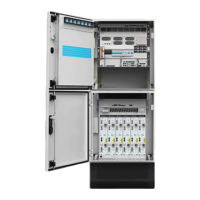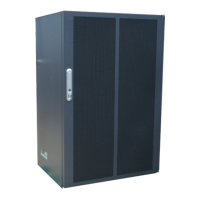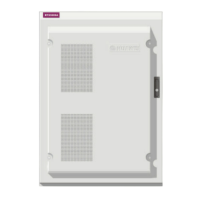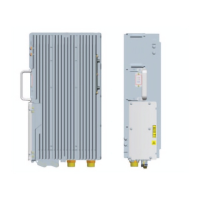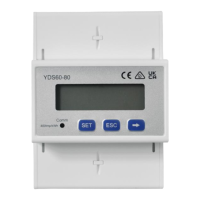Do you have a question about the Huawei BTS3012 and is the answer not in the manual?
| Brand | Huawei |
|---|---|
| Model | BTS3012 |
| Category | Accessories |
| Language | English |
Describes the BTS3012's role within the Huawei GSM radio access network.
Highlights the BTS3012 as an indoor macro-cell base station with high performance and reliability.
Details the BTS3012's coverage benefits like high receive sensitivity and power.
Outlines the BTS3012's capacity features, including TRXs per cabinet and cells per cabinet.
Describes the BTS3012's networking capabilities, supporting various transmission modes and topologies.
Explains the BTS3012's clock and synchronization features, including phase-lock and active/standby mode.
Explains how the BTS3012 can form a combined cabinet with other Huawei BTS models.
Discusses the BTS3012's antenna benefits, such as supporting RET and dual polarization antennas.
Details the BTS3012's power supply requirements, including AC and DC inputs.
Covers the installation features of the BTS3012, including wall mounting and combined cabinet installation.
Lists the frequency bands supported by the BTS3012 for different regions.
Provides the physical dimensions of the BTS3012 cabinet according to IEC standards.
Explains the overall functional architecture of the BTS3012.
Details the functions of the double transceiver subsystem in the BTS3012.
Describes the components of the RF subsystem of the BTS3012.
Explains the BTS common subsystem and cabinet top access subsystem.
Details the system configuration of the BTS3012, including TRXs and DTRUs.
Lists the various voice and data services supported by the BTS3012.
Describes special features of the BTS3012, including EDGE, handover, and encryption.
Explains static and dynamic power control capabilities of the BTS3012.
Details the BTS3012's capabilities for detecting collisions, board presence, and DTRU output power.
Mentions the extended cell function enabling coverage up to 120 km.
Introduces the Operation and Maintenance (O&M) subsystem and its two maintenance methods.
Provides an overview of the O&M subsystem and its maintenance methods.
Describes local maintenance procedures performed via a PC connected to the BTS3012.
Explains remote maintenance using a PC, GUI, and topological view.
Lists the powerful O&M functions provided by the BTS3012.
Discusses security management, including layered operation rights for maintenance engineers.
Details the alarm management function for detecting, reporting, and analyzing equipment faults.
Covers data configuration, allowing addition, deletion, modification, and consistency checks of BTS data.
Outlines maintenance functions like software download, log recording, and board testing.
Explains how system reliability is enhanced through methods like active/standby mode and redundancy.
Details the redundancy design for critical buses and DTMU modules using 1+1 backup.
Describes the system's ability to automatically detect and diagnose faults and report abnormalities.
Lists methods used to enhance hardware reliability.
Explains the protection mechanism against inserting functional boards into wrong slots.
Describes the N+1 redundancy backup mode for the fan box to ensure heat dissipation.
Details the automatic protection mechanism triggered by high temperature in the power amplifier.
Covers power supply reliability features like lightning protection and voltage variation protection.
Highlights the integrated lightning protection design for antenna ports, negating the need for external devices.
Discusses software reliability, focusing on error tolerance and self-healing capabilities.
Explains the seizure check mechanism for managing software resources and logs.
Describes the task monitoring function for detecting and reporting software or hardware faults.
Details the system's data consistency checks, restoration, and logging capabilities.
Explains how operation logs are saved to help locate errors and restore the system.
Details the radio-related specifications of the BTS3012.
Lists the BTS3012 working frequency bands for different regions.
Provides nominal output power of the DTRU for different modulation schemes.
Lists the static receive sensitivity of the BTS3012.
Covers the engineering specifications of the BTS3012.
Provides the mechanical dimensions (width, depth, height) of the BTS3012 cabinet.
Lists the weight of the BTS3012 for different configuration types.
States the BTS3012 power supply requirement (-48 V DC) and relevant standards.
Details the power consumption of the BTS3012 for different frequency bands and power modes.
Lists the transmission interfaces supported by the BTS3012.
Describes other external interfaces, such as clock interface.
Specifies the BTS3012 operation environment requirements (temperature, humidity).
Lists the Electromagnetic Compatibility (EMC) requirements and protocols the BTS3012 fulfills.
Mentions the protocols the BTS3012 complies with regarding acoustic noise.
States the BTS3012 compliance with ETS standards for storage environment.
States the BTS3012 compliance with ETS standards for transportation environment.
Lists ITU and ETSI standards that Huawei-developed BTS complies with.
Lists standards related to Abis and Um interface specifications for the BTS.
Details the environmental adaptability specifications for the BTS3012.
Lists EMC specifications and standards applicable to the BTS3012.
Lists specifications related to lightning protection for the BTS.
Lists safety standards relevant to the BTS.
Lists acronyms and abbreviations from A to D.
Lists acronyms and abbreviations from E to H.
Lists acronyms and abbreviations from I to M.
Lists acronyms and abbreviations from O to S.
Lists acronyms and abbreviations from T to W.
